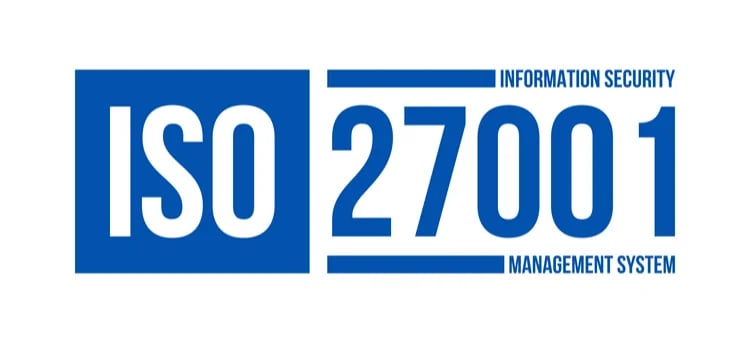The Ultimate Guide to Implementing ISO 27001: Security, Compliance, and Governance
Complete Guide to Implementing ISO 27001 for Security, Compliance & Governance Looking to achieve ISO 27001 certification? This in-depth guide covers everything from what ISO 27001 is, why it's important, who needs it, and how it supports business security to a step-by-step implementation strategy, mandatory clauses, security controls, compliance checklist, and best practices.
CYBERSECURITYADVISORY


Introduction to ISO 27001
ISO 27001 is the leading international standard for information security management systems (ISMS). It provides a systematic approach to managing sensitive company information, ensuring its confidentiality, integrity, and availability. Implementing ISO 27001 helps organizations protect their data, comply with regulatory requirements, and build trust with stakeholders.
Why is ISO 27001 Required?
Regulatory Compliance: Helps businesses meet legal and regulatory requirements (e.g., GDPR, HIPAA, PCI-DSS).
Risk Management: Identifies, assesses, and mitigates security risks.
Business Continuity: Ensures critical business operations remain secure and resilient.
Competitive Advantage: Enhances credibility and trust among clients and stakeholders.
Cybersecurity Strengthening: Protects against evolving cyber threats and vulnerabilities.
Who Needs ISO 27001?
Large enterprises handling sensitive data.
Startups and SMEs looking to improve security and compliance.
Financial institutions, healthcare providers, and government agencies.
Any organization handling customer or employee personal data.
Businesses aiming for global expansion and partnerships.
Step-by-Step Implementation Guide
1. Understanding ISO 27001 Requirements
ISO 27001 consists of 10 mandatory clauses and Annex A controls that provide security best practices:
Mandatory Clauses (Core Requirements)
Clause 4: Context of the Organization - Identify internal and external factors that influence security.
Clause 5: Leadership - Define responsibilities, assign roles, and establish ISMS objectives.
Clause 6: Planning - Conduct risk assessments and establish risk treatment plans.
Clause 7: Support - Ensure resources, communication, and awareness are in place.
Clause 8: Operations - Implement security controls, processes, and risk treatment measures.
Clause 9: Performance Evaluation - Monitor and measure ISMS effectiveness.
Clause 10: Continuous Improvement - Regularly update policies and security measures.
Annex A - Security Controls Framework
Annex A provides 114 controls grouped into 14 domains, such as:
Information Security Policies
Asset Management
Access Control
Cryptography
Physical and Environmental Security
Supplier Relationships
Incident Management
Compliance
2. Gap Analysis & Risk Assessment
Identify existing security policies and compare them with ISO 27001 requirements.
Perform a risk assessment and create a risk treatment plan.
Establish an asset inventory and classify information assets based on sensitivity.
3. Developing ISMS Policies and Procedures
An effective ISO 27001 implementation requires well-defined policies. Some essential documents include:
Information Security Policy
Risk Management Policy
Access Control Policy
Incident Response Plan
Business Continuity Plan
Change Management Policy
4. Implementing Security Controls
Deploy technical and procedural security measures aligned with Annex A controls.
Train employees on security awareness and compliance.
Establish identity and access management (IAM) controls.
Regularly conduct security audits and vulnerability assessments.
5. Internal Audits and Management Reviews
Conduct periodic internal audits to assess ISMS effectiveness.
Involve senior management in reviewing security performance and compliance.
Identify and resolve non-conformities.
6. Certification Process
Choose an accredited certification body.
Undergo a two-stage certification audit:
Stage 1: Documentation review and readiness assessment.
Stage 2: On-site audit to verify implementation.
Maintain compliance through annual surveillance audits.
ISO 27001 Compliance Checklist
✅ Define the scope of ISMS. ✅ Conduct a risk assessment and implement a risk treatment plan. ✅ Establish security policies and procedures. ✅ Implement access controls and data protection measures. ✅ Conduct regular security awareness training. ✅ Monitor and evaluate ISMS performance. ✅ Conduct internal audits and management reviews. ✅ Prepare for and pass the certification audit. ✅ Maintain compliance through continuous monitoring and improvement.
Best Practices for a Successful ISO 27001 Transition
Executive Buy-in: Involve leadership from the start.
Engage Employees: Foster a culture of security awareness.
Automate Compliance: Use security tools for monitoring and reporting.
Integrate with Other Frameworks: Align with NIST, GDPR, SOC 2, etc.
Regular Updates: Keep policies, procedures, and controls up-to-date.
Incident Response Plan: Have a robust strategy for handling security incidents.
ISO 27001 Policy Pack (Essential Documents for Certification)
Organizations should maintain a comprehensive policy pack, including:
ISMS Manual (Overview of security policies and procedures)
Risk Assessment Report
Access Control Policy
Acceptable Use Policy
Data Classification Policy
Incident Response Plan
Business Continuity Plan
Supplier Security Policy
Compliance and Audit Reports
ISO 27001 Policies and Standards (Mandatory Policies)
Information Security Policy
Access Control Policy
Incident Response Policy
Business Continuity Policy
Data Protection Policy (GDPR Alignment)
Conclusion
Implementing ISO 27001 is a strategic move for organizations aiming to enhance security, governance, and compliance. By following this step-by-step guide, businesses can establish a strong ISMS, mitigate security risks, and achieve certification. With continuous improvement and adherence to best practices, organizations can maintain a robust security posture and build trust with customers and stakeholders.
Next Steps
Conduct a gap analysis to assess your current security posture.
Develop ISMS policies and implement security controls.
Prepare for internal audits and certification assessments.
Continuously monitor, evaluate, and improve security practices.
📅 Book a consultation for customized implementation support.
